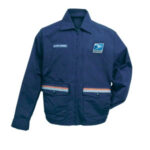Traditions form the bedrock of the military, fostering a strong sense of unity and shared identity among service members. For those connected to someone in the military, understanding these traditions, especially those surrounding the Formal Military Uniform, can significantly enrich your appreciation and support. This guide offers insights into formal military uniform etiquette, helping you navigate military environments with respect and understanding.
Understanding Formal Military Uniform Etiquette
The formal military uniform is more than just clothing; it’s a symbol of service, discipline, and honor. Certain behaviors are expected of service members when they are in uniform, and as a guest in their world, understanding these expectations is key.
Public Displays of Affection
While affection is natural, overt public displays are generally avoided when a service member is in uniform. This is a matter of decorum and maintaining a professional image. Brief embraces or kisses, especially during significant moments like deployments or homecomings, are usually acceptable. However, prolonged or excessive displays are considered inappropriate.
Eating, Drinking, Mobile Use, and Smoking
Maintaining a sharp and professional appearance is paramount in uniform. Therefore, activities like eating, drinking (except perhaps a discreet water bottle), using a cellphone, or smoking while walking are generally prohibited. These actions can detract from the crisp, disciplined image a formal military uniform represents.
Headwear (“Covers”)
Formal uniform hats, often called “covers,” have specific rules. They are to be worn outdoors as part of the complete uniform. When indoors, these covers are removed and typically carried. An important point to remember: service members do not salute when “uncovered,” meaning without their hat on.
Umbrellas
Even practical items like umbrellas have regulations within formal military uniform guidelines. In some branches, service members are not permitted to carry umbrellas while in uniform. Offering to hold an umbrella for a service member in the rain is a thoughtful gesture and shows your awareness of uniform protocols.
Formal Military Occasions and Uniforms
Formal military events are significant occasions where the dress uniform takes center stage. Understanding the uniform’s role in these events enhances your appreciation of the ceremony.
Graduations
Military graduations, whether from basic training or officer commissioning programs, are milestone events. These ceremonies often feature guest speakers and formal proceedings. For service members, graduation from basic training is often their first time wearing the formal dress uniform in a public and celebratory context. The formal uniform signifies their transition and achievement.
Homecomings
Deployment homecomings are emotionally charged events. While the atmosphere can be celebratory and sometimes relaxed, there’s often a formal element, especially before service members are officially released to their families. Formal military uniforms might be worn during initial homecoming ceremonies, adding to the sense of occasion and the gravity of their return.
Military Balls
Military balls are the epitome of formal military events. These are black-tie affairs requiring service members to wear their dress uniforms. For guests, the expectation is equally formal, with floor-length gowns and suits being customary. The formal military uniform at a military ball underscores the tradition, honor, and camaraderie central to military service.
Understanding the nuances of formal military uniform etiquette is a valuable way to show respect and support for service members. By being mindful of these customs, you contribute to an environment that honors their service and traditions.

